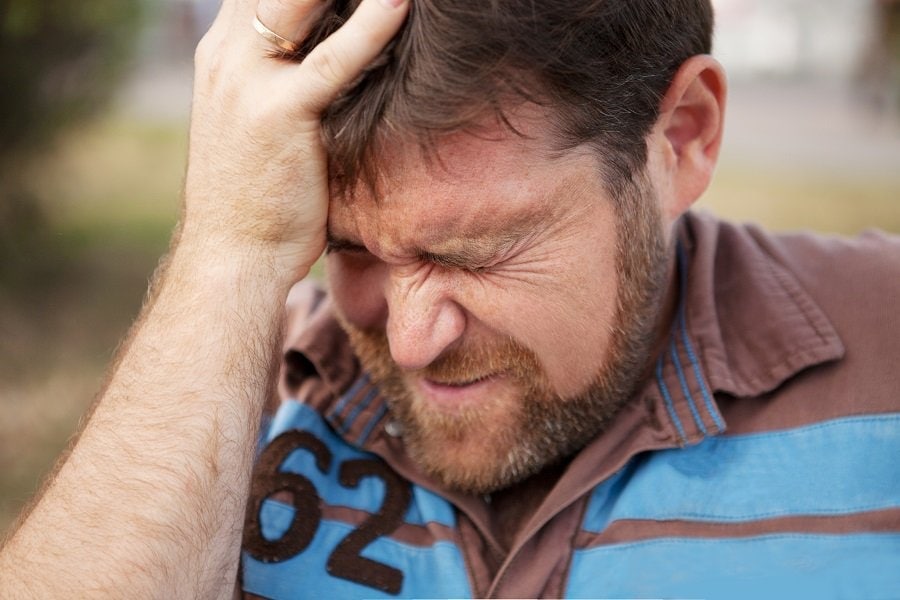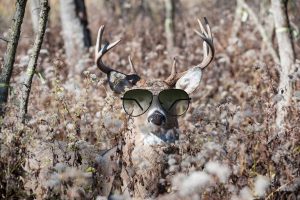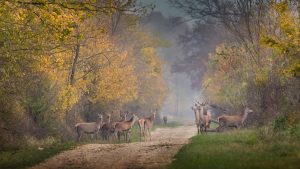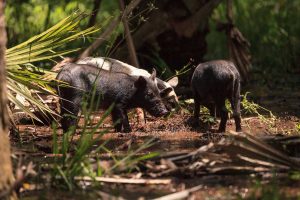If you have ever spent any significant amount of time around bows of various types and archery equipment in general, you have undoubtedly been warned about the dangers of dry firing a bow. Most new archers have been imparted with words of wisdom regarding this subject before ever sending their first arrow downrange.
But for someone that has never witnessed such an event taking place, how are you to know exactly what the consequences of such an action are? With this much attention being given to the subject of dry firing a bow, there must be a good reason.
Contents (Jump to Topic)
The truth is, dry firing, or facilitating the act of firing a bow without the presence of a nocked arrow, can lead to a wide array of catastrophic mechanical failures.
Often when a bow is dryfired, damage can be quite significant. The archer (YOU!) who has fired the bow also risks personal injury on behalf of splintering limbs or a derailing bowstring or cable.
Check out this video to see the aftermath of a real dry fire event:
What Is Dry Firing A Bow?
Dry firing is the term coined for the discharge of a bow, whether intentional or accidental, without an arrow being present. The two most common sources of a dry fire event are
- Accidental discharge during a practice draw
- Bow use by an inexperienced or uninformed individual.
When a bow is drawn in the absence of a nocked arrow, any form of accidental discharge will lead to a dry fire event. Likewise, those who are not accustomed to the ins and outs of archery in general risk dry firing a bow without being aware of the potential consequences.
Why Is Dry Firing A Bow Bad?
Dry Firing A Recurve Bow
When a bow is fired under normal operating conditions, the energy stored in the limbs of a recurve bow is transferred to an arrow upon its release. This is true for both higher-priced bows and cheaper recurve bows as well.
This expenditure of energy is not allowed to take place when no arrow is present. Instead, a significant amount of energy reverberates throughout the bow itself. When this is the case, damage can and often does occur.
Dry Firing A Compound Bow
A modern compound bow stores immense amounts of energy within its limbs and cams when at full draw. This is the same energy that is used to propel an arrow downrange at blistering speeds.
In the event that a compound bow is fired without an arrow being present, this release of energy shock loads all structural components of the bow in question. More times than not, when a compound bow is dry fired, some degree of damage occurs.
read.. how long does a recurve bow last?
What Exactly Could Happen?
When a bow is dry fired, it is likely that damage will follow. What is not exactly certain is to what extent this damage will be. The following is a list of some of the most common mechanical failures that happen as a result of a dry fire situation.
1. Splintered Limbs
The sheer vibration that takes place upon dry firing a bow is often enough to push limbs to their limit. Mass amounts of kinetic energy stress every fiber of a bow’s limbs, leading to everything from micro fractures to limbs that seemingly disintegrate upon the string’s release.
This damage can occur in a fraction of a second and hurt the absent-minded archer both physically and financially.
2. Bent Cams
When you consider the sheer amount of energy that is stored in a bow’s cams at full draw, it is no wonder that dry fired bows and bent cams go hand and hand.
As a cam rotates along its axis, kinetic energy is being transferred at a rapid rate. When the lack of an arrow prevents this transfer from taking place, the cams take the brunt of the punishment in most every case.
3. Warped Cam Tracks
Along the same lines as a cam itself can get bent in the process of a dry fire; cam tracks can experience warpage as well. The abrupt influx of uninterrupted energy in a bow’s cams during a dry fire can easily distort the structural integrity of the cam tracks in a way that makes them no longer viable for use.
Since a bow’s buss cables and bowstring run along these cam tracks, this can also lead to issues with more dire consequences.
4. String And Cable Derailment
During a dry fire, the extreme distension of a bow’s buss cables and bowstring can easily divert them from their intended position within the cam tracks, therefore causing a derailment (read.. best recurve bow bowstrings)
This can also come as a secondary consequence of warping a cam track. As the track is distorted, the bowstring’s original placement within the track becomes displaced, essentially walking it off of the cam in the process.

What To Do After Dry Firing A Bow?
If you do happen to have the misfortune of dry firing your bow, you must now figure out how best to ensure the functionality and safety of the bow in its current state.
A couple of options exist when seeking to determine your bow’s status after a dry fire event:
Archery Shop
The safest and most effective means of discerning the status of your bow after a dry fire has occurred is to take it to your local archery pro shop.
Not only do the technicians in archery shops typically have credentials that certify them in bow inspections, but also most have also witnessed the aftermath of many dry fires and know exactly what to check for.
Inspect Yourself
If you choose to inspect the bow for damage yourself, there are several key points not to be overlooked.
Visual Inspection
First, look the bow over carefully for any visible signs of damage. Carefully study your limbs, cams, cam tracks, and bowstring/buss cable condition and routing.
Cotton Ball Test
If no obvious damage can be located, that does not mean that you are out of the woods yet. Slowly run a cotton ball along the entire duration of both limbs. If minute splintering has occurred, a cotton ball will typically hang on such jagged problem areas, thereby locating a problem that warrants further inspection.
Get A Second Opinion
Although you might not have located any apparent damage, a dry fire still warrants a trip to the local pro shop for a second opinion. After all, no amount of extra precaution is excessive when it could possibly save you or someone else from grave personal injury.
How To Avoid Dry Firing A Bow
The best way to avoid dry firing a bow is to have a proactive attitude toward never drawing a bow without an arrow being securely nocked.
The potential of dry fire can’t exist if you do not put yourself in a compromised position in the first place.
Additionally, when drawing a bow, it is considered a best practice to keep your finger behind the trigger on your release until you are absolutely ready to shoot. This prevents an archer from accidentally bumping the trigger upon drawing their bow.
Want to know whats the ideal draw weight for your compound bow? Click here.
Conclusion
Dry firing a bow is like playing a game of chance that can have disastrous consequences should your luck run dry. While not every dry fire leads to total catastrophic equipment failure, it does occur on a regular enough basis to instill fear in those who have witnessed such an occurrence.
When the unthinkable happens, and a bow is dry fired, your new bow can be scattered about on the range in a handful of pieces, and physical injury is not out of the question.
However, through stringent adherence to archery safety, a dry fire event is 100 percent preventable.
We would love to hear from you. Please leave us any feedback that you might have.
FAQ
Q: What Is Dry Firing A Bow?
A: Dry firing is the term coined for the discharge of a bow, whether intentional or accidental, without an arrow being present. The two most common sources of a dry fire event are:
– Accidental discharge during a practice draw
– Bow use by an inexperienced or uninformed individual
Q: What Exactly Could Happen When Dry Firing a Bow?
A: When a bow is dry fired, it is likely that damage will follow. What is not exactly certain is to what extent this damage will be. The following is a list of some of the most common mechanical failures that happen as a result of a dry fire situation:
– Splintered Limbs
– Bent Cams
– Warped Cam Tracks
– String And Cable Derailment
Q: What To Do After Dry Firing A Bow?
A: A couple of options exist when seeking to determine your bow’s status after a dry fire event:
– take your bow to your local archery pro shop
– inspect the bow for damage yourself
– Carefully study your limbs, cams, cam tracks, and bowstring/buss cable condition and routing
– Slowly run a cotton ball along the entire duration of both limbs. If minute splintering has occurred, a cotton ball will typically hang on such jagged problem areas.
Q: How Can I Avoid Dry Firing A Bow?
A: The best way to avoid dry firing a bow is to have a proactive attitude toward never drawing a bow without an arrow being securely nocked.
Q: Can you tell if a bow has been dry fired by looking at it?
A: Damage from a dry fire event is not always immediately visible, so a thorough inspection of the bow is necessary to ascertain whether or not a dry fire has occurred. Signs that may point to a dry fire event are as follows: Jagged fracture lines on the bow’s limbs or riser. Cracks in the bow’s risers. Peened or flattened nock ends on the bowstring. Bent or broken bowstring strands. Damage to cams, cam tracks, and/or cable slides.
Q: Can a bow survive a dry fire?
A: It is possible for a bow to survive a dry fire event, but the odds are not in its favor. The extent of damage that will occur is not always foreseeable, so it is best to take all precautions necessary to avoid such an occurrence.
Q: Can you pull a bow back without an arrow?
A: It is considered a best practice not to pull your bow back without an arrow. And if you need to do so, be sure that your finger is not on or near the trigger.
Q: Can you dry fire a recurve bow?
A: No. You should not dry fire a recurve bow, compound bow, or crossbow!
Q: What should you do if you accidentally dry fire your bow?
A: If you happen to accidentally dry fire your bow, cease using it immediately and take it to a qualified archery professional for an inspection.
Q: Can you dry fire a compound crossbow?
A: No. Never dry fire a crossbow! The limbs could crack or splinter!






